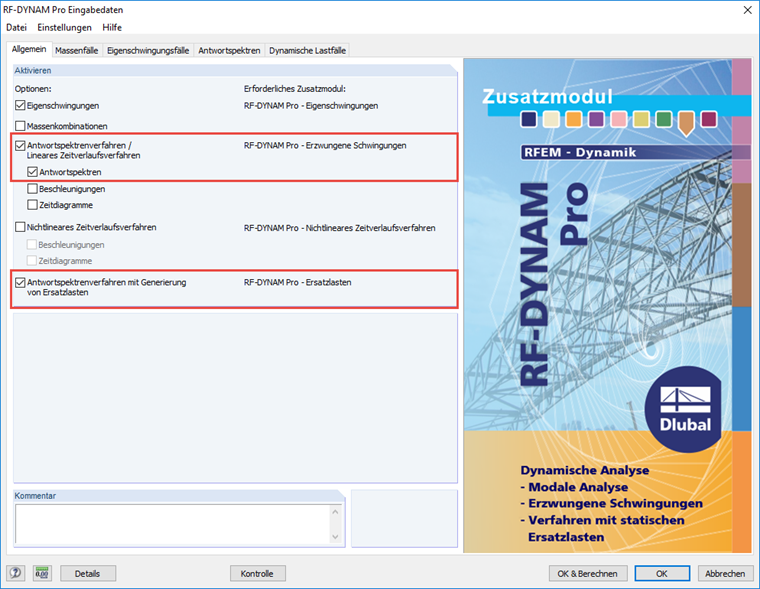Answer:
RF‑/DYNAM Pro – Equivalent Loads performs a multi-modal response spectrum analysis with the export of equivalent loads.
- The static equivalent loads are calculated and exported to load cases. This happens separately for each mode shape and each direction of excitation.
- The total earthquake forces can be determined easily for each mode shape.
- Accidental torsional actions can be taken into account automatically
- The load cases are calculated in the main program RFEM/RSTAB. Possible nonlinearities are taken into account; the calculation parameters of the load cases can be adjusted (for example, the calculation according to the second-order analysis, deactivation of nonlinearities).
- The stiffness modifications from the natural vibration cases (NVCs) are not transferred to the load cases automatically.
- The result combinations are generated individually for each excitation direction (combined modal responses with SRSS or CQC) and for the combination of results from different excitation directions (SRSS, 100%/30% [40%]).
- The sign-dependent results are available on the basis of the dominant mode shape, which results in unique RCs.
- The results can be reproduced step by step.
In RF‑/DYNAM Pro – Forced Vibrations, a multi-modal and multi-point response spectrum analysis is performed.
- A building can be subjected to the excitations by different response spectra at different supports and in different directions.
- The calculation and superposition are carried out within the RF‑/DYNAM Pro add‑on module. The calculation is linear; nonlinearities are not taken into account. The stiffness modifications from the ESFs are applied.
- Only result combinations of the superimposed results are exported.
